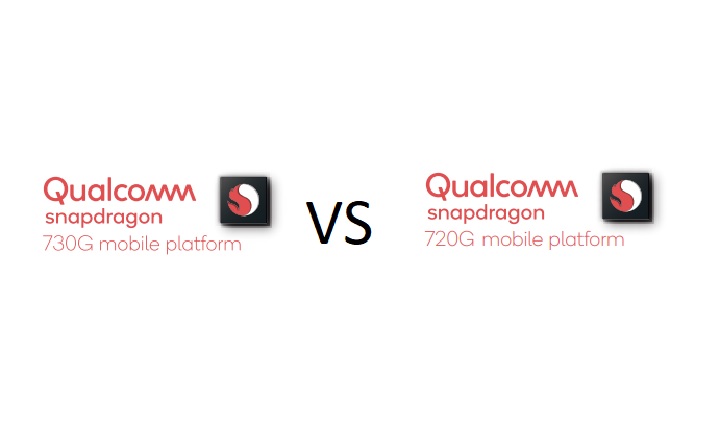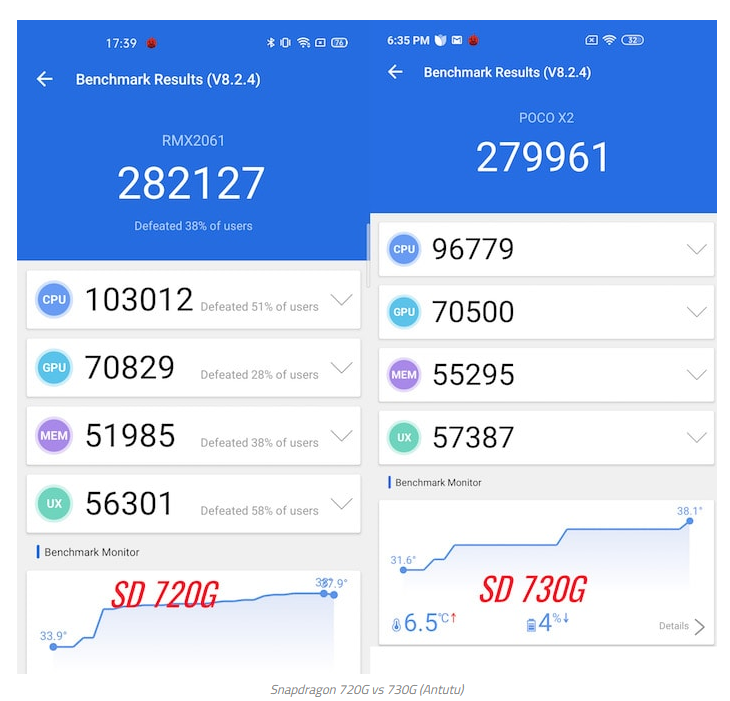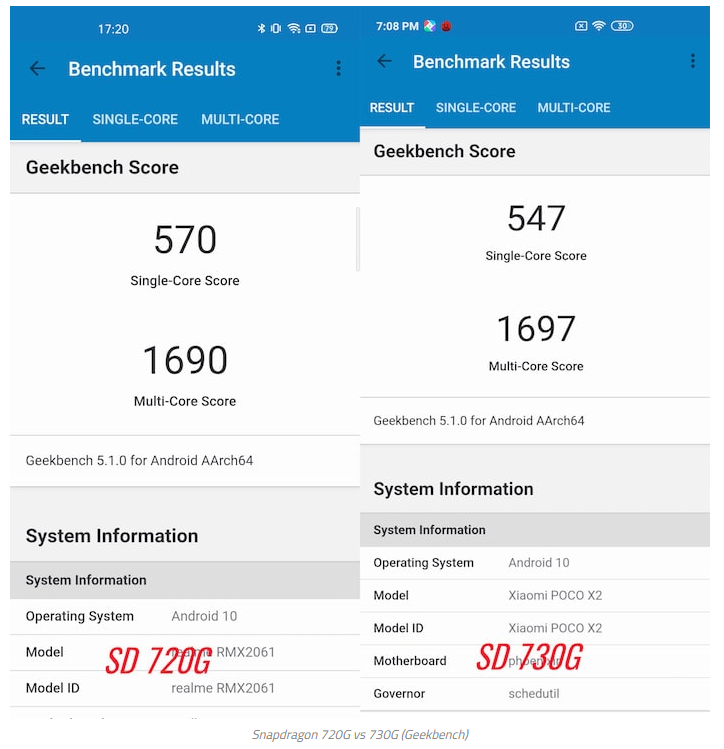Update: Added the new Redmi Note 9 series to the post as well as new details of the Snapdragon 720G (benchmark results) that actually change the conclusion.
Mobile games have become demanding when it comes to CPU and GPU requirements. Games such as PUBG, Call of Duty Mobile, and Fortnite all require much more compared to games such as Candy Crush. Chipmakers seeing this need for extra processing power have made specially-designed chipsets to handle these games.
For Qualcomm, its gaming chipsets have a “G” at the end of their names which denotes the chipset has select Snapdragon Elite Gaming features and graphical boost compared to the standard processors. Two of its chipsets that fall into this category are the Snapdragon 730G announced in April 2019 and the more recent Snapdragon 720G.
The Snapdragon 730G powers quite a number of phones already such as the Samsung Galaxy A80 and the POCO X2. The Snapdragon 720G, on the other hand, is the chipset inside the Realme 6 Pro, the Redmi Note 9 Pro, and the Redmi Note 9 Pro Max (yes, that is a mouthful). So how do these two chipsets compare to one another? Let’s find out below.

| Snapdragon 730G (SM7150-AB) |
Snapdragon 720G (SM7125) |
|
| Node size | 8nm | 8nm |
| No. of cores | 8 | 8 |
| CPU | 2.2GHz 2x Kryo 470 Gold (based on Cortex-A76) + 1.8GHz 6x Kryo 470 Silver (based on Cortex-A55) |
2.3GHz 2x Kryo 465 Gold (based on the Cortex-A76) + 1.8GHz 6x Kryo 470 Silver (based on Cortex-A55) |
| GPU | Adreno 618 (15% graphics boost) with support for 4K HDR10 and physically based rendering | Adreno 618
with support for HDR10 |
| DSP | Hexagon 688 | Hexagon 692 |
| Maximum Display Support | QHD+ | FHD+ |
| Modem | Snapdragon X15 LTE (800Mbps downlink and 150Mbps uplink) | Snapdragon X15 LTE (800Mbps downlink and 150Mbps uplink) |
| Bluetooth and WiFi | 5.0 and W-iFi 6 | 5.1 and W-iFi 6 |
| Location | GPS, Glonass, BeiDou, Galileo, QZSS, and SBAS | GPS, Glonass, BeiDou, Galileo, QZSS, SBAS, and NavIC support |
| Quick Charge | 4+ | 4.0 |
The above is a table comparing the key specs of the two processors. However, there is more to it.
CPU: Both chipsets are built on the same node and feature the same processor cores. The Snapdragon 720G has a higher clockspeed but from the name of its performance core, it should not be as powerful as the Kryo 470 in the Snapdragon 730G, right? Wrong. An AnTuTu benchmark result shows the Snapdragon 720G is actually better in terms of performance than the Snapdragon 730G.

In the image above, the Snapdragon 720G scores a total of 103012 points compared to the Snapdragon 730G’s 96,779 points with respect to CPU performance. For Geekbench, the Snapdragon 720G scores higher in the single-core performance but scores just a tiny bit lower than the Snapdragon 730G in multi-core performance.

GPU: The two processors have the same GPU but the Snapdragon 730G should be better because Qualcomm says it has a 15% boost compared to the Snapdragon 730’s own GPU which is also the Adreno 618. Wrong again. While Qualcomm has refused to mention the clock speed of the GPU in all three SoCs, the AnTuTu benchmark result above shows that the Snapdragon 720G’s GPU actually scores slightly higher than that of the Snapdragon 730G. Does this mean it is clocked higher? That is very likely.
DSP: The DSP for the Snapdragon 720G is higher and it comes with the new Qualcomm Sensing Hub that is present in the Snapdragon 865. This is an improvement over the Always-Aware Hub of the Snapdragon 730G.
The Snapdragon 730G supports displays with a maximum resolution of QHD+ compared to the Snapdragon 720G that maxes out at FHD+. However, that is not a big deal as a phone with a QHD+ screen will surely not have a Snapdragon 700 series processor.
Also, the Snapdragon 730G also supports 4K HDR10, unlike the Snapdragon 720G that supports just HDR10.
Others: The Snapdragon 720G wins in other areas too. It has Bluetooth 5.1, unlike the Snapdragon 730G that has Bluetooth 5.0. It also has NavIC support which is India’s own satellite location system. Slightly surprising is that it only supports Quick Charge 4.0 while the Snapdragon 730G supports Quick Charge 4+.
Conclusion
The Snapdragon 720G is definitely the more powerful chipset with its better CPU and GPU. However, the Snapdragon 730G is close on its heels. In everyday usage, most people will not notice the difference between the two processors.
When it comes to choosing a phone powered by either of these chipsets, what will actually determine what you buy will be other parameters such as price, cameras, software support, battery capacity, and even design. However, performance will not be a huge difference.
UP NEXT: UNISOC’s Tiger T7520 5G processor is the world’s first 6nm EUV processor






